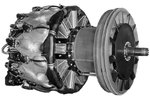wiking85
Staff Sergeant
I know we've had a slew of these types of threads, but some very interesting information tends to come out of them, so I'll add another:
What would Germany's best option have been for long range naval reconnaissance? Bonus points if it can be an offensive bomber too, like the FW200.
Edit:
Only aircraft that could be in action by June 1940.
What would Germany's best option have been for long range naval reconnaissance? Bonus points if it can be an offensive bomber too, like the FW200.
Edit:
Only aircraft that could be in action by June 1940.
Last edited:

